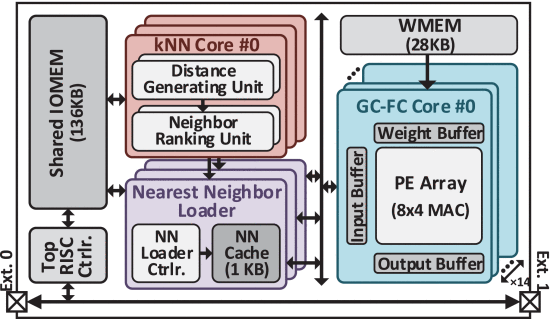A low-power graph convolutional network (GCN) processor is proposed for accelerating 3D point cloud semantic segmentation (PCSS) in real-time on mobile devices. Three key features enable the low-power GCN-based 3D PCSS. First, the new hardware-friendly GCN algorithm, sparse grouping-based dilated graph convolution (SG-DGC) is proposed. SG-DGC reduces 71.7% of the overall computation and 76.9% of EMA through the sparse grouping of the point cloud. Second, the two-level pipeline (TLP) consisting of the point-level pipeline (PLP) and group-level pipelining (GLP) was proposed to improve low utilization by the imbalanced workload of GCN. The PLP enables point-level module-wise fusion (PMF) which reduces 47.4% of EMA for low power consumption. Also, center point feature reuse (CPFR) reuses computation results of the redundant operation and reduces 11.4% of computation. Finally, the GLP increased the core utilization by 21.1% by balancing the workload of graph generation and graph convolution and enable 1.1× higher throughput. The processor is implemented with 65nm CMOS technology, and the 4.0mm 2 3D PCSS processor show 95mW power consumption while operating in real-time of 30.8 fps in the 3D PCSS of the indoor scene with 4k points.
Related papers:
Kim, Sangjin, et al. “A Low-Power Graph Convolutional Network Processor With Sparse Grouping for 3D Point Cloud Semantic Segmentation in Mobile Devices.” IEEE Transactions on Circuits and Systems I: Regular Papers (2022).
Kim, Sangjin, et al. “A 54.7 fps 3D Point Cloud Semantic Segmentation Processor with Sparse Grouping based Dilated Graph Convolutional Network for Mobile Devices.” 2020 IEEE International Symposium on Circuits and Systems (ISCAS). IEEE, 2020.
